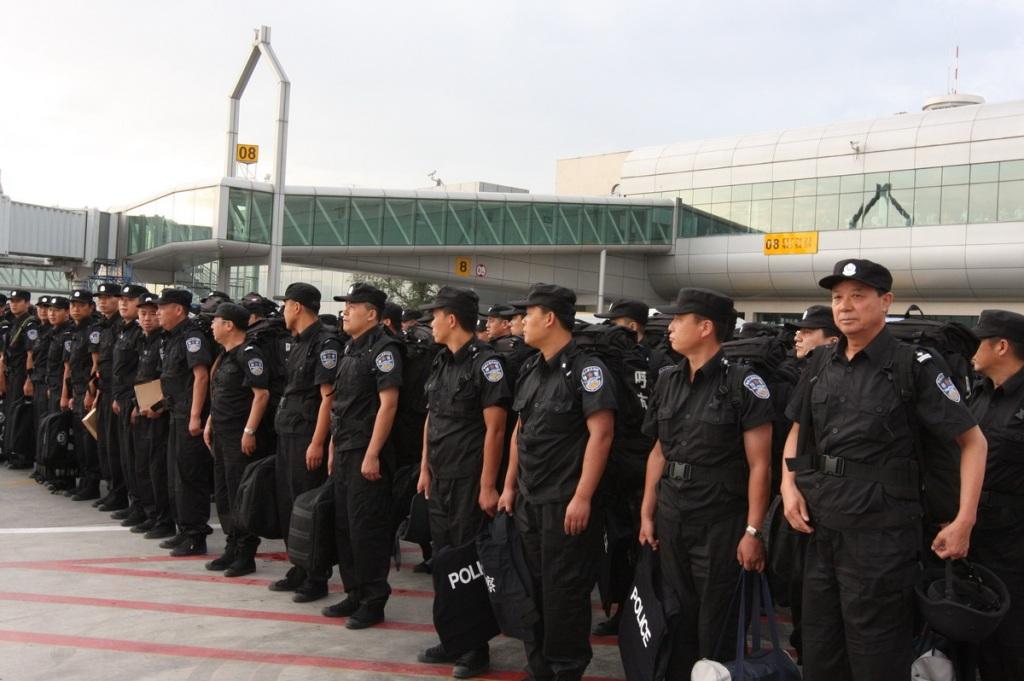 |
|
|
Public Security Bureau Special Police preparing for "maintaining social stability and public security" in Hohhot, capital city of Inner Mongolia Autonomous Region.
|
The following is an English translation of a news report that appeared on China's official news agency China Law Net (www.law.cn) on June 20, 2010:
Inner Mongolia has Spent 300 Million Yuan in 6 Months Maintaining Stability
The Inner Mongolia Autonomous Region has assigned 315 provincial-department level cadres and 21320 regular cadres throughout all levels of government for the purpose of defusing social conflicts. More than 300 million Yuan (60 million USD) has been spent since the beginning of this year in this effort.
Xing Yun, a member of the Inner Mongolia Autonomous Region Party Committee, Secretary of Political and Legal Committee, and Deputy Director of the Regional Committee for Comprehensive Management of Public Security, stated that the Autonomous Region’s Party Committee has prioritized the organizing and launching of special actions for maintaining social stability, establishing the goals and quantification of the specific programs, and setting up four separate implementation proposals and the corresponding special action organizations responsible for their implementation.
Currently, the Inner Mongolia Autonomous Region has already set up four supervisory teams that guide the work of monitoring public security and issuing punishment. During the individual inspections, 588 critical places were identified across the Region with 367 given punishment and 15 in the process of punishment. At the township or Sum (second smallest administrative unit) level and Gachaa (smallest administrative unit) level, comprehensive management of stability maintenance work centers and work stations have been set up. Law enforcement bodies are leading the effort to organize civilian mediators and stability maintenance informant teams to effectively carry out the work of resolving civil disputes and defusing social conflicts. The Public Security Bureau is organizing personnel engaged in the civilians-surveillance-against-civilians, civilians-punish-civilians and Public Security informant programs to effectively carry out the work of public security surveillance and control.
The Inner Mongolia Autonomous Region signed agreements of responsibility related to stability maintenance, comprehensive management of public security, and controlling petitioners at various levels. This was done following a detailed analysis of the plans and the Three Critical Actions campaign was listed as a specific goal for the region. The Autonomous Region’s Party Committee has increased the weight of the work of maintaining stability in assessing the cadres’ performance and achievement from 6% to 16.7%. The Autonomous Region’s Party Committee’s Organization Department and Petitioner Management Coordination Office have issued a regulation calling for regular meetings on the campaign by key Party and Government officials. All levels and all departments of the government must strengthen their leadership, distribute the tasks and delegate the responsibilities to mobilize all walks of society to participate in this campaign.
As a result of the first phase of the work, the Three Critical Actions has led to positive development across the region. Basic statistics regarding the social conflict problem have roughly been captured, and early success has been achieved.
For original report in Chinese, click here: http://news.iyaxin.com/content/2010-06/20/content_1894976.htm







